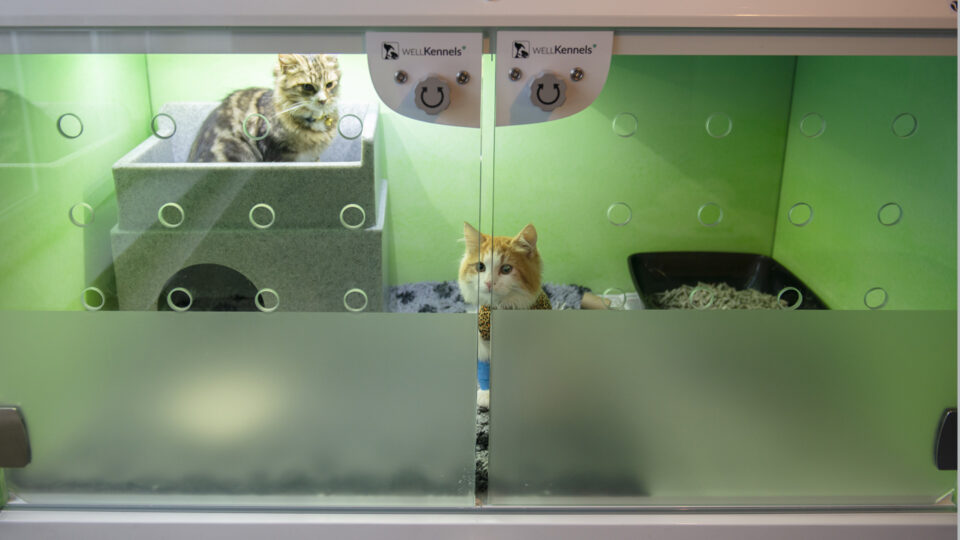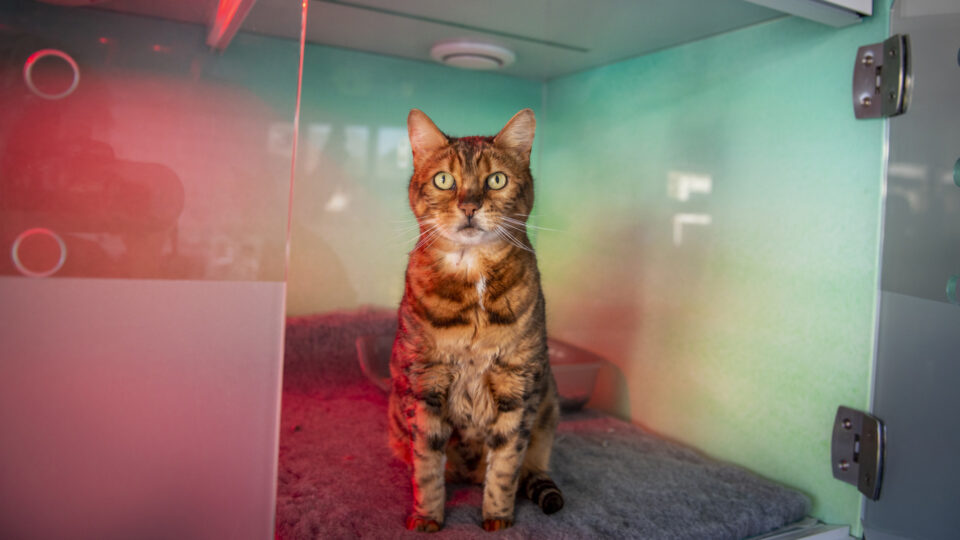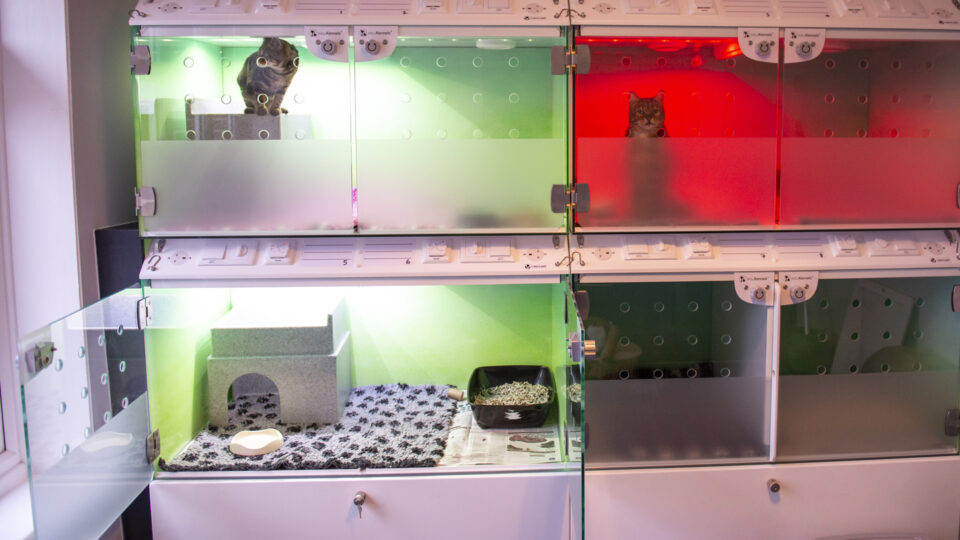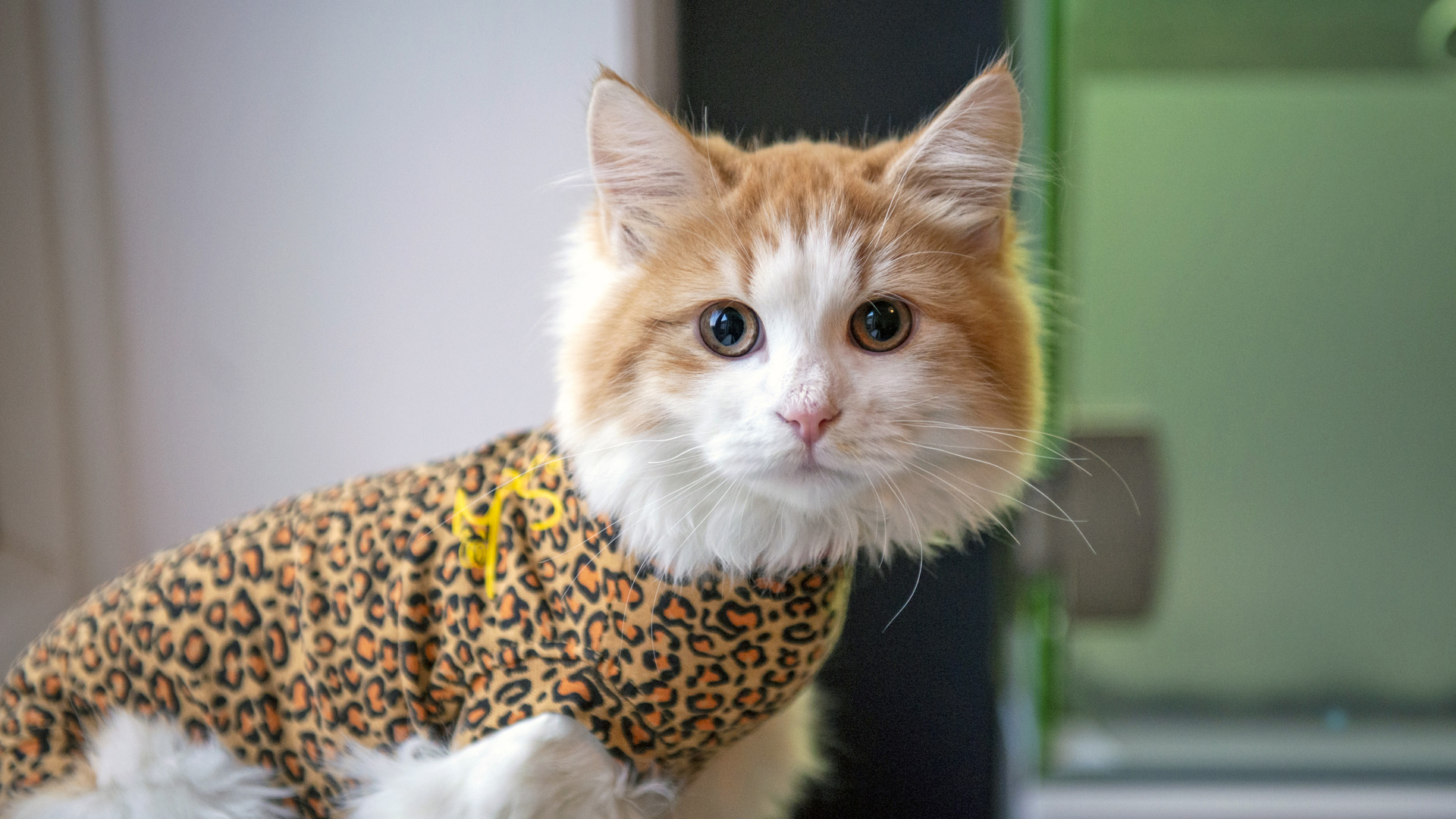A dedicated cat clinic
Here at The House Vet we have created a stress free environment for our feline friends. We are proud to announce that we have been awarded the ISFM Gold Friendly Cat Clinic, setting the gold standard for feline care.
Cats have distinct differences from dogs in terms of their health and behaviour. They tend to feel most comfortable in their own homes and may find the veterinary clinic environment stressful due to the unfamiliar sights, sounds, and smells. Our goal with the cat clinic is to provide a calm and peaceful environment that is specifically designed for cats. Cats still retain many of their “wild” characteristics from their ancestors, such as being territorial (preferring not to leave their home area), independent, and sensitive to new sights, sounds, and smells. They are also naturally fearful of other species, including dogs (even if they live with one), particularly when they are unable to escape easily.
We have opened a dedicated cat clinic with separate waiting area, consult room, cat recovery as well as a separate theatre.

Stress free tips for travelling with your cat to the vets
We understand that bringing your cat to the vet can be a stressful time. Here are some tips to help make for an easier experience.
It is important to choose a carrier that is sturdy and secure. An ideal carrier should have room for the cat to be able to turn around but not be so large that they feel unstable. A top opening carrier tends to be preferred and one that comes apart will make it easier to encourage your cat into or out of the basket.
Use comfortable, soft bedding to line the bottom of the carrier. You can also use an item of clothing or a favourite blanket that smells of home. Spraying the bedding with a feline facial pheromone such as Feliway up to 30 minutes before travel, will help your cat to feel safe and secure in their carrier. Using a spare blanket to cover the carrier when travelling helps to keep the cat calm.
There are some steps you can take to get your cat used to the carrier before the need to travel. Using the carrier as a bed at home will allow your cat to become familiar with the carrier being a safe place. Feeding your cat inside their carrier can also help to create a feeling of safety and introduce positive association towards it.
When the time comes to bringing them in the car make sure to place the carrier in the footwell or on the seat secured with the seatbelt. If travelling with more than one cat, then each cat should have a separate carrier.
For further training tips to help acclimatise your cat to the carrier and the car journey please follow the links below.

How to medicate your cat
How to give your cat tablets.
At some point in your cat’s life, you will need to give your cat a tablet, this can be a stressful and daunting experience for you both. Some tablets are designed to be palatable which means your cat will eat them of his/her own accord but even then, not all cats will. Cats are suspicious and clever at noticing unfamiliar tastes in their food.
Here are some tips to help you…
Be prepared – get everything you need ready. Be gentle and keep calm. Try to make medicating your cat a rewarding experience with cuddles and treats especially as you may have to medicate your cat long term. If possible, have someone to help you if you have to administer the tablet rather than in the food. Most medication needs to be given with food anyway so having treats or their favourite food to hand is ideal.
Start with feeding the treat first without any medication on or in it, then add the medication whether it is in liquid form or a tablet and then once eaten give the treat again medication free. Foods that are of high value to the cat should be used such as tuna, butter, cream cheese etc. You can also use something that is in a paste form that can be sucked up in a syringe or squirted out of a packet such as Cattit creamy cat treats or Hills AD. Special treats can be purchased that you can hide the tablet in and mould the treat around it, for example vivitreats, easypill or greenies pill pockets.

More help with medicating your cat
To aid giving medication you can use a pill giver, this is like a syringe but has a soft tip that you can load the tablet into and place the syringe into the cat’s mouth and press the plunger, which deposits the tablet into the cat’s mouth. Some tablets can be crushed to aid administration, your veterinary surgeon will be able to advise you. If your cat will not take a treat after medication, it is a good idea to syringe some water into the cat’s mouth as some medications can cause irritation of the oesophagus.
You may need to restrain your cat and possibly ask for assistance from a family member or neighbour. If necessary, the cat can be wrapped in a towel. One person gives the tablet and the other holds the front legs and body into themselves, this will help stop the cat struggling.
If you are on your own tuck the cat under your left arm, facing forwards. Place your thumb and index finger of your left hand either side of the cat’s head on the corners of the mouth, tilt the head upwards until the lower jaw slightly opens. Holding the tablet between your thumb and index finger of your right hand open the lower jaw with your middle finger and drop the tablet into the cat’s mouth, close the mouth and gently rub the throat until the cat swallows.
Have a look at Icatcare’s YouTube channel for demonstrations on administering tablets and further tips.

